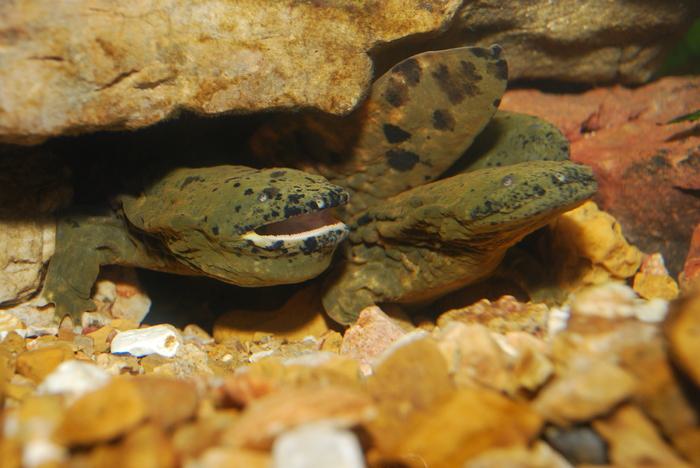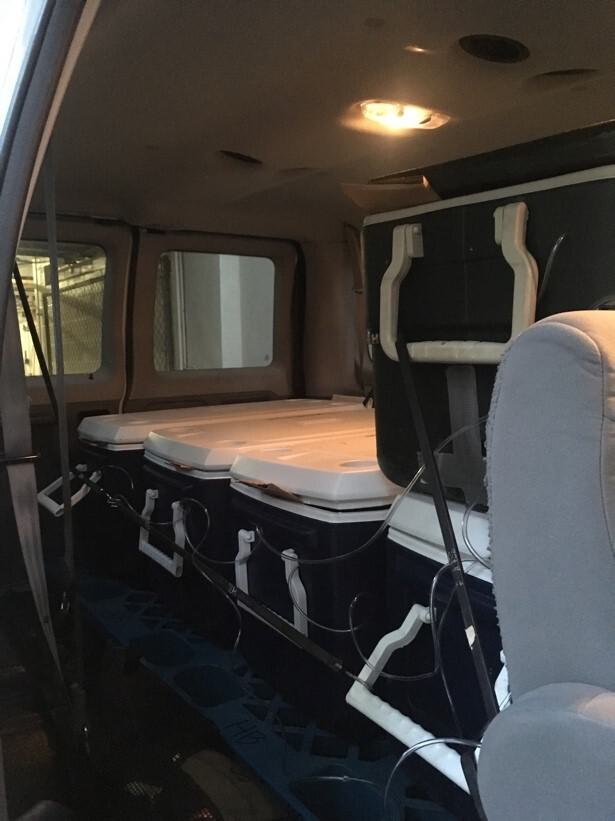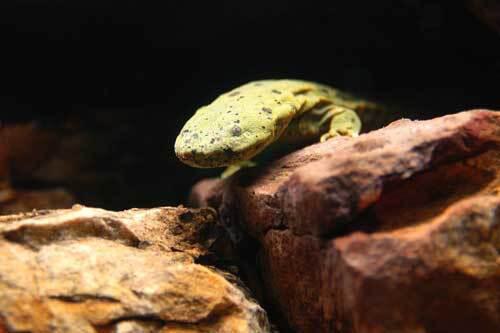The job of returning Zoo-raised hellbenders back to their natal rivers starts with an early wake-up call. Hellbender keepers arrive at the Zoo before sunrise, when the Zoo campus is still quiet and the heavy humidity in the air hasn't yet dissipated with the sun's rays. Prior to that morning, hellbenders are thoughtfully chosen for release based on their age, health, sex, and native river. The goal: to maximize the survival of the hellbenders and the reproductive capacity of the hellbender populations in native Missouri rivers.
Keepers carefully retrieve the selected hellbenders from their enclosures and place them into large, water-filled and aerated coolers for transport. Once keepers and coolers are safely secured, they begin the journey back to the river. Together, they travel through interstates and winding back roads until arriving at the bank of the river where previous generations of hellbenders were once abundant.

Once at the river, keepers don their wetsuits and snorkels and prepare the canoe. With hellbenders and datasheets in tow, they set off to locate suitable habitat. Hellbenders typically use large rocks for protection and for the creation of dens during the breeding season. As the crew searches for the right rocks, they can see crayfish, the preferred prey item of hellbenders, propelling themselves along the river bottom.
When the crew identifies a suitable location, they record the information and take one of the hellbenders out of the canoe. Swiftly and unceremoniously, they place the hellbender under the water with its head pointing towards a suitable rock. Upon release, the hellbender swims, by undulating its body through the water, until it comes to rest under the rock, completely hidden from view. The keepers say a final farewell and express their well wishes before repeating the process somewhere else along the cool, flowing river.

The drive back feels lonelier, with several fewer passengers, but hopeful. The lives of the released hellbenders are uncertain now that they have returned to the wild, but their presence there helps to reduce and reverse the significant declines that have been observed in wild populations for decades. There are likely several complex drivers of the species' decline including changes to the water quality and habitats of their native rivers, but these causes are still not fully understood. Thus, the release of hellbenders from the Zoo's conservation breeding and head-starting program at the Ron Goellner Center for Hellbender Conservation is a key component of the species' recovery.

The release of hellbenders from the Zoo every year also frees up space at the Charles H. Hoessle Herpetarium to raise and release a new generation of hellbenders into the wild. The Zoo and its keepers that support the hellbenders will continue this cycle until our native Missouri rivers can once again support self-sustaining populations of hellbenders that call the river home.

